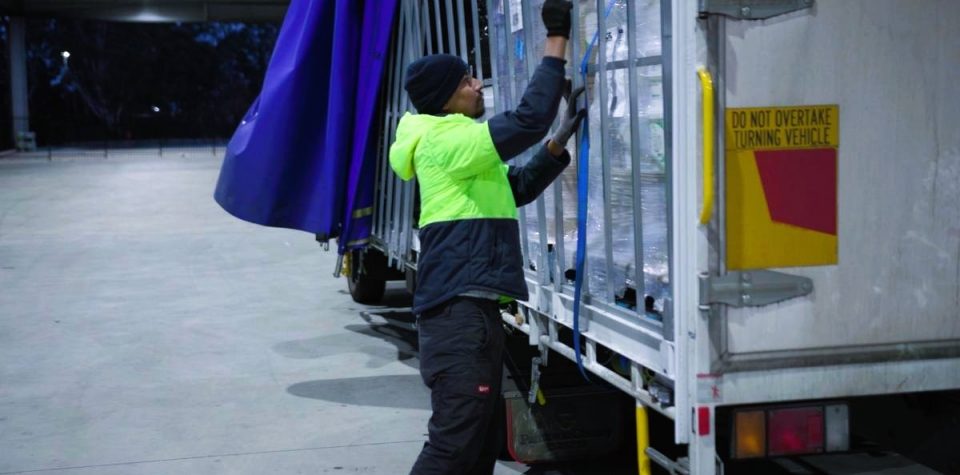Table of Contents:
- Going the Distance
- Gather the data and crunch the numbers
- Some Tips on How to Get Started With Last-mile Analytics
- Identify the KPIs (Key Performance Indicators) in your supply chain
- Choose the Correct Data Sources
- Develop a Data Analysis Plan
- Integrate your data systems
- Monitor progress and adjust your strategies to suit
- Last-Mile Data Analytics is Your Friend
Using digital analytics tools to analyse your supply chain’s performance can improve the efficiency of the last mile of your deliveries.
“He’s going the distance,
He’s going for speed…”
- Cake, The Distance
If you run an e-commerce business, you’ll know how important it is to deliver your products to your customers as fast and efficiently as possible. You will also know how challenging it can be to manage that last mile of your supply chain: that final step of delivering goods from your transportation hub to your expectant customers.
The last mile is often the most complex and expensive part of the supply chain as it involves multiple factors such as weather conditions, customer availability, traffic flows, driver behaviour, and delivery preferences. That vital last mile can also make or break your customer satisfaction responses, as customers expect timely, accurate and convenient delivery of their goods.
That is why you need to leverage the last-mile analytics capabilities of digital software. These systems can process, collect and analyse the data from the last mile of your supply chain. Last-mile analytics can help you optimise your operation, improve customer customer loyalty and (this is a big one these days) reduce your costs.
In this blog post, we are going to take a look at some of the benefits of using last-mile analytics for your e-commerce business.
Going the Distance.
For e-commerce businesses, the last mile of the supply chain is crucial in ensuring timely and efficient delivery to their customers. It is also the stage of the supply chain that can potentially have the most hiccups. So being able to optimise the last mile of your supply chain, in order to ensure that potential snags are identified and planned for, can make going the distance just that little bit more efficient and effective.
Gather the data and crunch the numbers
Last-mile analytics systems will help you to gather, analyse and utilize data such as delivery time, driver behaviour and customer feedback. This information is valuable and useful stuff, as it will enable you to make informed decisions based on real data, rather than floundering around using guesswork.
These are some of the ways that last-mile data analytics can help to tweak and improve your delivery systems.
- Optimise your routes. Last-mile analytics can help you plan the best routes that your delivery drivers can follow, taking into account factors such as distance, road conditions, traffic flows, and customer location. This will help you to save time and resources as well as avoid delays: something that can dramatically affect your customers’ satisfaction.
- Reduce your costs. One of the great things about last-mile analytics is that it can help you identify and eliminate waste and inefficiencies in the last mile of your operations. For example, you can use data analytics to optimise your vehicle capacity, reduce idle time, minimise returns and redeliveries and avoid unnecessary detours.
This can help to lower your operational costs and boost your profit margins. You can then funnel these savings into such avenues as promotions, plant upgrades…and maybe a smoko shout once a month!
- Improve your delivery times. Last-mile analytics can help you monitor and track your delivery performances in real-time using metrics such as delivery time, driver behaviour, customer feedback, and delivery status. This can help you ensure that your deliveries are on time and meet the expectations of your customers. You can also use this data to predict and prevent potential issues and disruptions such as driver shortages, weather events, rush-hour snarl-ups, or vehicle breakdowns.
- Enhance customer satisfaction. One of the greatest benefits of last-mile analytics is that it gives you empirical data that you can use to enhance your customers’ experience. These days, good customer feedback and client loyalty are some of the most prized possessions of a successful company.
So by using data analytics to provide overview and control of your supply chain, you’ll be able to keep your customers happy even if the elements, traffic and general unplanned stuff try to upset your carefully planned apple cart.
For example, you can use the information gleaned from your last-mile data analytics to send delivery notifications and updates to your clients. You can offer them alternative or flexible delivery times, or locations based on product availability, current traffic flows or weather conditions.
Customers appreciate honest and up-to-date information about their deliveries, so this is a simple way to bolster customer satisfaction and engender customer loyalty.
Some Tips on How to Get Started With Last-mile Analytics.
While implementing last-mile analytics may seem a bit daunting at first — all those new numbers and stuff to wade through — there are several steps your e-commerce businesses can follow in order to get started.
Here are a few tips for you to consider.
Identify the KPIs (Key Performance Indicators) in your supply chain
Sit down with your management team and figure out which KPIs matter most to your particular business. These could include such things as delivery speed, accuracy of delivery, and customer satisfaction with your service. These KPIs will provide a sound foundation for configuring your last-mile data analytics system.
Choose the Correct Data Sources
Too much information can be detrimental to clear analysis and result in confused planning and implementation strategies. So you’ll need to select data sources based on your specific needs and avoid having to deal with stacks of unnecessary information..
For example, GPS tracking devices can provide insights into how your delivery personnel deal with changing traffic conditions. On the other hand, customer feedback forms can provide an exceptional amount of useful data about how satisfied your customers are with your service and their delivery experiences. Both of these datasets can be used in different ways to fine-tune your last-mile systems.
Develop a Data Analysis Plan
Create a plan for analyzing and interpreting the collected data. This may involve working with external partners or hiring data analysts who specialize in logistics and transportation management. Sometimes it’s a good idea to bring in someone with a clear and unbiased overview, who can make recommendations based on the data rather that emotion or entrenched ideas.
Integrate your data systems
This is where your TransVirtual software systems really come in handy. They provide seamless integration between the different data systems you may be using across your organization, including inventory management software, order fulfilment platforms, and fleet management tools.
By integrating your data systems you’ll be able to grab snapshots from all over your supply chain and use them to spot the pinch points and plan to avaid them effectively.
Monitor progress and adjust your strategies to suit
This is the biggie. Regularly review the progress of the changes or improvements you make to your last-mile systems against set targets. This may involve refining route planning algorithms, tweaking driver schedules, or even introducing new technologies to streamline delivery processes.
Last-Mile Data Analytics is Your Friend.
Last-mile analytics represent a powerful tool for optimising the all-important last mile of your e-commerce business’s supply chain and, as a result, improving your customer’s satisfaction with your service. By using the data gleaned from last-mile analytics, you can improve your supply chain’s efficiency, lower your operating costs and boost your bottom line.
Here at TransVirtual, we are happy to help you get started with planning and implementing your last-mile data analytics system. So if you’d like to know more, just drop us a line. One of our dedicated and knowledgeable staff will be on hand to help you go the distance and ensure that the last mile of your distribution system is, indeed, the most efficient part of your supply chain.



